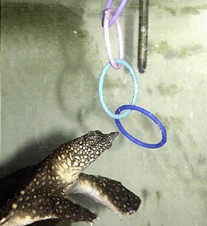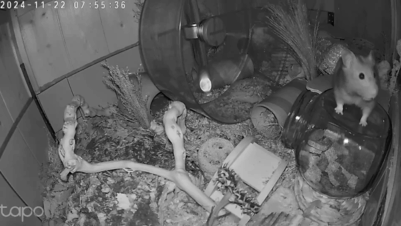It cannot be very often that a child instinctively wants a clownfish from a swell of 28,000 Piscean potentials, or that one morning an adult wakes up and spontaneously says “I’ve just got to have a monkey!” Something makes them do it. Popular presumptions often point to big movies such as Finding Nemo or Harry Potter for sparking a run on acquiring the latest thing that swims, flies or crawls. Yet, for such iconic animal stars, the scientific evidence-based data on prompted trade trends is at best ambiguous, and arguably contradicts claims of an upsurge in newly bought “Nemos”. And it’s a similar story for owls and primates.
The association could be there – masked between erroneous reporting and downright misdeclarations – but all things being equal, the big movie makers may not be as guilty as portrayed. These popular animals were already out there, not least because for decades people have been led, or misled, into keeping exotics by the pet industry. But things are getting worse and whether or not films are somewhat culpable, pet popularisation in social media is definitely part of it.
Social media studies
In the past five years alone, there has been a raft of new studies acknowledging social media as a notable driver of exotic pet keeping and its well-known problems of animal welfare, species declines, illegal trafficking, public health and safety, invasive introductions and more.
Among these studies, research shows that personalised web-based video channels result in the normalisation of exotic pets. Also, it appears that promoters post engaging upbeat images and missives because they attract favourable or humorous comments, rather than posts being based on positive experiences leading to informed recommendations. In addition, certain human-animal interactions – such as handling and tickling – can be wrongly characterised by posters as endearing and attractive when they may in fact be eliciting stress-related behavioural responses.
Overall, social media regularly misrepresents exotic animals as suitable pets and downplays the problems, either through biological ignorance or commercial dishonesty.
Supply leading demand, not demand leading supply
It is perhaps fair to argue that humans, being part of nature, can, or indeed should, harbour a healthy interest – fascination even – for the animal kingdom around them. After all, other species are part of our environment and getting back to nature is good. Studies show that, for example, even viewing plants in workspaces can produce calming effects on people. Oddly enough, it seems common knowledge that plants frequently get too big for their pot, yet a caged bird that cannot fly or a snake that cannot stretch can go whistle or hiss. If plants could get up and wander around, would people still feel comfortable trapping them in a pot?
Part of this confused mindset may come down to messaging. Garden centres advise that roots need plenty of space, whereas pet sellers commonly claim that animals do not. Regardless, few parents would pamper a child’s wish for poison oak in their bedroom and giving into demands for a pet terrapin is like buying one’s offspring a soft toy soaked in salmonella. Surely, the answer should be “no”.
Conclusion
As a readily accessible resource, social media in its many forms harbours the potential to convey responsible messaging – whether for avoiding that exotic pet, improving husbandry for those already here, or finding the right veterinarian to oversee the well-being of creature and client alike. However, despite its inherent value as an objective educational instrument on exotic pet issues, social media has become an advertising stream highjacked by traders and an inadvertent influential broadcaster by the unenlightened for the unenlightened.
The veterinary profession has long played an important role in responsible pet messaging – nowadays greatly facilitated by clinic websites and vet-vlogs. But it isn’t enough to counter the amount of other content that is broadcast through social platforms. A key theme within the latest publications involves calls for urgent host-policy changes, as well as content management promoting public awareness to extinguish wrongly legitimising demand for exotic pets. Social media operators need to formally acknowledge their role as a home base for mistakenly amplifying positive exotic pet messages that have negative net outcomes. The accountability challenge has been set and moderation of exotic pet promotion must follow.










